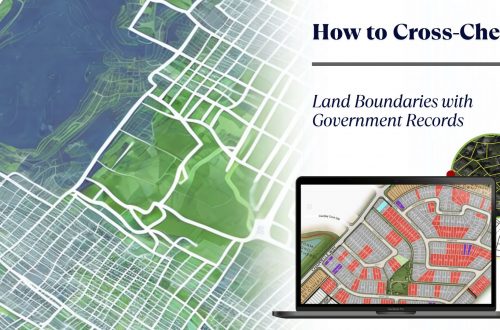
Smart Real Estate Management in 2025: How GIS and MIS Are Transforming Land Administration
The real estate industry is undergoing a major transformation in 2025, driven by digitalization, automation, and data-driven decision-making. With urbanization accelerating and real estate markets becoming more complex, traditional land management methods face significant challenges.
Challenges in Traditional Land Management:
- Manual Record-Keeping: Paper-based property records are prone to errors, duplication, and loss.
- Fraud and Ownership Disputes: Lack of transparency in property transactions leads to legal disputes and fraud.
- Inefficiencies in Land Use Planning: Poor data management results in suboptimal zoning, environmental risks, and delayed development projects.
To address these challenges, Geographic Information Systems (GIS) and Management Information Systems (MIS) are revolutionizing land administration by providing real-time data, automation, and predictive analytics. These technologies enhance land governance, improve investment decisions, and create more sustainable urban developments.
Role of GIS and MIS in Real Estate Land Management
GIS and MIS play distinct but complementary roles in real estate land management:
GIS for Real Estate:
- Mapping & Spatial Analysis: Helps visualize land parcels, infrastructure, and environmental features.
- Site Selection & Land-Use Planning: Assists in selecting optimal locations based on proximity to amenities, transportation, and economic zones.
- Geospatial Analytics: Provides insights into acquisition status, land use patterns and neighborhood data.
MIS for Real Estate:
- Data Management & Automated Workflows: Organizes large volumes of property-related information for easy access.
- Decision Support Systems: Managing land proposals with all land information and approval process from the stakeholders.
- Regulatory Compliance & Legal Tracking: Ensures adherence to land laws, taxation policies, and environmental regulations.
The Power of Integrating GIS and MIS
The combination of GIS and MIS allows seamless land administration by providing location-based intelligence and structured data management. This integration enhances land asset tracking, real estate planning, and efficient urban governance.
Key Features of GIS & MIS-Based Land Management for Real Estate
1. Real-Time Property Visualization:
mapping and geospatial analytics provide a dynamic view of properties and their surroundings.
Virtual site inspections reduce the need for physical visits and streamline project planning.
2. Automated Land Records Management:
Digital land deeds and ownership tracking minimize paperwork and prevent fraudulent transactions.
3. Risk Assessment and Zoning Regulations:
GIS overlays highlight flood-prone areas, earthquake risk zones, and environmental hazards.
Automated zoning compliance ensures regulatory adherence before construction begins.
Benefits for Real Estate Developers and Investors
Enhanced Decision-Making:
- GIS and MIS provide real-time property insights, enabling smarter investment strategies.
- Developers can plan infrastructure projects with greater precision.
Fraud Prevention:
- GIS integration secure property transactions and prevent ownership disputes.
- Smart contracts ensure transparency in real estate dealings.
Faster Approvals and Compliance:
- Automated regulatory compliance streamlines building permits and land-use approvals.
- Reduced manual intervention accelerates project execution.
Use Cases in the Real Estate Industry
Smart City Planning:
- GIS helps governments plan road networks, water supply, and waste management efficiently.
- Urban expansion models predict future development needs.
Commercial Real Estate Management:
- GIS assists in choosing the best sites for retail, office spaces, and warehouses.
- Geospatial data helps investors analyze foot traffic and accessibility.
Sustainable Real Estate:
- GIS aids in green zoning, ensuring eco-friendly building practices.
- Solar potential analysis helps developers incorporate renewable energy solutions.
Future Trends in GIS & MIS for Real Estate (2025 and Beyond)
AI & Machine Learning for Predictive Analytics:
- AI-driven models will forecast property price trends, buyer behavior, and market fluctuations.
- Automated land suitability analysis will improve site selection.
Blockchain-Powered Smart Contracts:
- Smart contracts will facilitate secure, automated property transactions.
- Land registry digitization will reduce fraud and increase trust in the real estate market.
Drone-Based Land Surveys:
- Drones will be used for high-precision topographic mapping and site inspections.
- Faster land surveys will accelerate project approvals and reduce costs.
IoT Integration for Real-Time Property Monitoring:
- Smart buildings will feature IoT-enabled sensors for security, energy management, and maintenance alerts.
- GIS-based smart grids will improve urban energy efficiency.
Conclusion
GIS and MIS-based land management solutions are redefining real estate administration in 2025, offering improved transparency, efficiency, and profitability. These technologies empower real estate developers, investors, and government agencies to make informed decisions, mitigate risks, and optimize land use planning.
Why Invest in GIS & MIS for Real Estate?
- Enhanced efficiency in property transactions and land governance.
- Reduced fraud risks with blockchain-based land registries.
- Better decision-making using AI-powered real estate analytics.
To stay ahead in the evolving real estate market, businesses must invest in GIS-MIS-powered land management solutions. Partnering with the right technology provider will ensure seamless integration, compliance, and future-ready real estate management.

Darshana Mukherjee is a Senior Consultant in Business Development with over 11 years of experience in sales, primarily focused on the Geospatial IT industry. Her expertise lies in driving business growth through strategic partnerships, client engagement, and delivering solutions. She combines her technical knowledge with business acumen to contribute effectively to organizational success.





